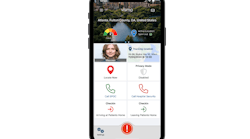To borrow a quote from Yogi Berra, “It feels like déjà vu all over the again.” I’m talking about how the adoption trajectory of network audio systems bears a striking resemblance to the rollout of IP video nearly two decades ago.
When I moved to the U.S. in 2001, analog security cameras and DVRs were in their heyday. At the time, there were a lot of strong contenders in the field. Here I was, a newcomer to the industry, touting a totally new technology that would forever change the security landscape. Needless to say, it was an uphill battle convincing distributors, integrators and end users that IP surveillance was going to revolutionize the industry. A lot of their resistance to change was rooted in misconceptions about the technology, what it could deliver and what it would cost.
Fast forward to 2018. The IP video revolution is now a fait accompli. More than 85 percent of the revenue in video surveillance comes from IP-based solutions (cameras, VMS and NVRs) while sale of analog and DVR technology is in rapid decline. If you dig into the reason for the shift it wasn’t driven by lower cost, but rather by far better performance, value, and greater return on investment for the customer.
But as we all know, technology never remains at a standstill. Now the industry is in the midst of yet another revolution: a face-off between traditional analog audio systems and new intelligent network audio solutions.
Like the previous IP revolution, the main obstacle to adoption has been convincing distributors, integrators and end users entrenched in the old technology that IP audio is a better value proposition. I’m finding that their reluctance to embrace innovation is often rooted in misconceptions about the technology, what it can do and what it might cost – a familiar refrain, wouldn’t you say?
So let’s start with what IP audio is all about. Then we can talk about countering those misconceptions.
IP Audio Systems in a Nutshell
A network audio system is complete solution in a single unit. In addition to the loud speaker, the system includes on-board intelligence, an equalizer and an amplifier, a mixer and a digital signal processor, a microphone and power supply, as well as a loudspeaker. It connects to the network and streams audio through a PoE port. In addition, the system comes with built-in SIP support for easy integration with a customer’s VoIP telephone system for live announcements.
Network audio solutions are built on an open platform standard so they can easily integrate with different subsystems (such as surveillance systems) and run third-party applications. This makes the systems future-proof and able to support new music streaming sources as they come on the market.
4 Myths You Shouldn’t Believe
Like I mentioned early, skepticism about new IP technology is nothing new. I often hear comments like, “If IP audio is so great, why are the major analog players not jumping on the bandwagon?” The answer to that one is pretty straightforward. Incumbents rarely drive change. It’s too disruptive to their ecosystems – their supply chains, distribution channels, integrators, etc. Plus, it’s not really a growth opportunity for them, because they’d be tapping the same customer base they already have, just switching revenue from one technology to another.
If we expect to accelerate a change in the audio landscape we need to dispel the myths that impede intelligent network audio system adoption.
#1 – IP speakers are too expensive.
When determining at costs, you have to look at the whole system. A good analog speaker for professional installations runs about a $100. But then you have to factor in the hidden expenses for cabling, labor and head end equipment like amplifiers, mixers, and equalizers for centrally managing the technology. An IP network speaker, on the other hand, typically costs $400-$500. However, it’s designed to piggyback on a building’s existing IP network backbone, so often there’s no additional cost for cabling and labor to string it. These IP systems are pre-configured to work right out of the box. All you need to run a network audio system is a PC and software. Furthermore you can control the system from anywhere there’s network connectivity, giving customers the flexibility to manage the system locally, regionally or from a central location.
#2 – IP speaker systems do not have as good an audio quality as analog speakers.
Intelligent network audio systems are actually full-featured sound systems specifically designed to deliver high-quality music playback and crystal-clear speech, whether live announcements or canned messages. Furthermore, unlike analog audio systems, these IP solutions are self-monitoring. Each speaker regularly tests itself by sending a test tone through the system for the built-in microphone to pick up and verify that everything is working properly and that the volume is set to the appropriate level. This is a significant improvement over analog speakers where the only way to be sure the connection is working and the sound quality is good is to send someone out there to listen. Additionally, audio quality doesn’t degrade because of cable quality or length, a common shortcoming with analog audio systems.
#3 – IP speaker systems aren’t enterprise-level solutions.
Network audio systems are actually highly scalable and customizable which makes them ideal for enterprise deployment. Because they’re IP-based users can easily add or remove individual speakers from the network as needs change. Since IP speakers are intelligent, programmable devices they can be addressed and controlled individually or in clusters or zones. For instance, a user can direct different background music, live or pre-recorded announcements to each speaker individually or synchronize music and announcements for different clusters or zones of speakers. Network audio systems give users enormous flexibility to pre-program and schedule audio centrally over the network and even adjust timing and volume on the fly.
When it comes to sourcing music, intelligent network audio systems afford users a wide range of options. They can draw on the speakers’ pre-installed audio player application. They can create their own MP3 playlists from audio streaming services. Or they can air local playlists they’ve compiled and stored on the network audio system’s SD card.
#4 – IP speaker systems are unproven technology.While intelligent, network audio systems have only been on the market for a few years, they’re already gaining significant traction. They first penetrated the market as an integral adjunct to security system, broadcasting canned and live announcement to deter intruders. Adding the ability to play background music alongside public address makes them more versatile for a broader variety of markets.
Where the Untapped Markets Are
The audio market overall is quite huge – everything from home sound systems to concert halls and broadcast studios. Within that sphere, public address, background music and audio for security represent multi-billion dollar opportunity. Today if you look up at the ceiling in many airports, large stores or schools you might be surprised to find there are more speakers there than surveillance cameras. Given that those areas are primarily served by analog technology today, it’s a great untapped market for dealers, distributors and integrators to exploit. If you’re a video surveillance integrator, you should also look to your existing customer base. IP audio can be a great upsell product to augment a customer’s IP video surveillance system or replace their antiquated analog audio system. The scalability of IP audio makes it a good value proposition for large hotels, hospitals, transportation hubs and educational institutions looking for reliable, easily managed paging and public address solutions. And its exceptional flexibility makes it a good fit for retail chains that want to enhance their customers’ shopping experience with engaging background music and timely announcements.
What Will the New Audio Landscape Look Like?
Just like IP video, IP audio is going to be a disrupter. Many new vendors, distributors and channel partners are likely to enter the arena as the IP audio market matures. The shifting landscape will give rise to new relationships between integrators and their customers as trusted partners will be able to offer clients a whole new array of services and support.
Thanks to the maturity of IP technology in general, the change is likely to occur much quicker than it did with IP video. So my advice is to embrace this new convergence before someone else beats you to it.
About the Author:
Fredrik Nilsson is Vice President of the Americas, Axis Communications, Inc. He is the author of “Intelligent Network Video: Understanding Modern Video Surveillance Systems” published by CRC Press and now in its second edition.


